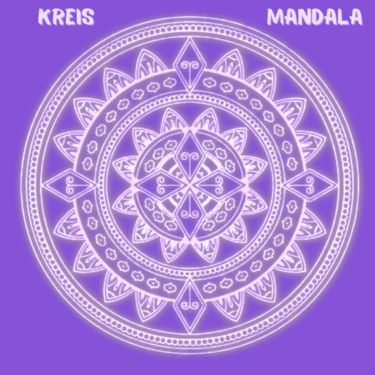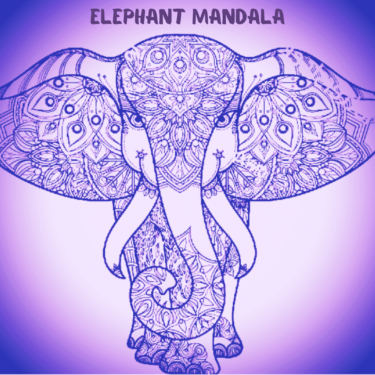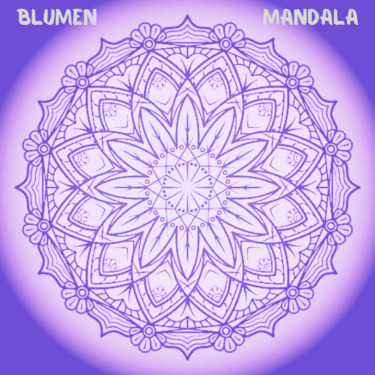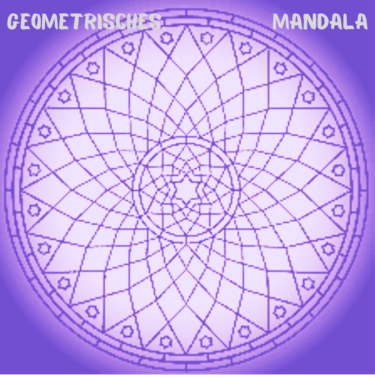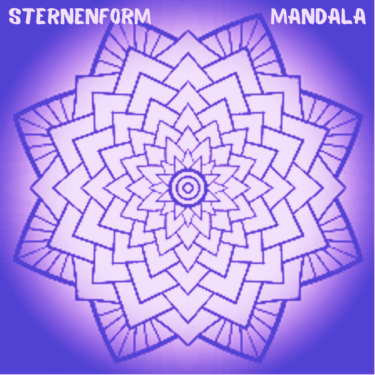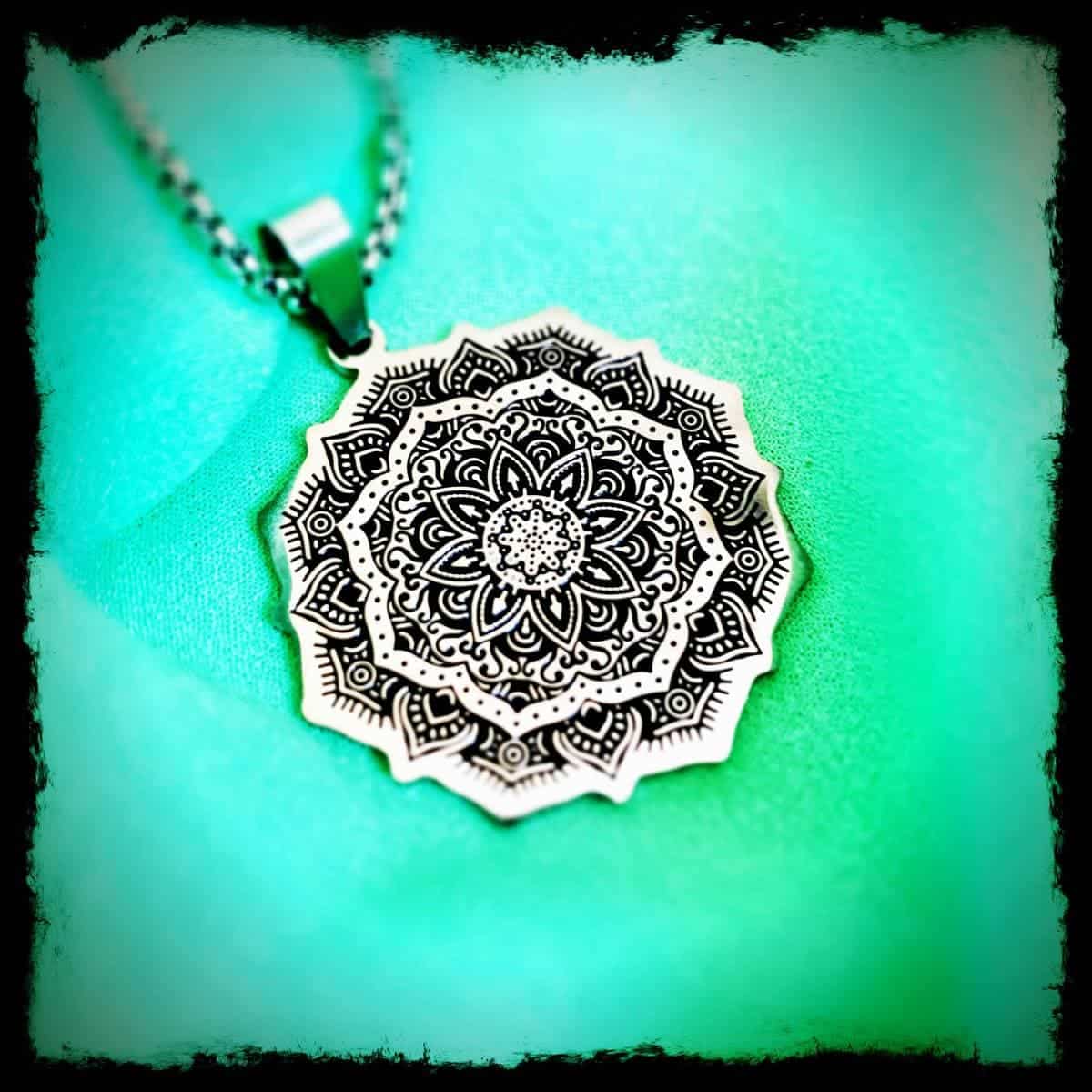
Mandalas मण्डल
Info Mandalas
Here in the text below info mandalas you will find the differences between the various mandala forms and their meaning explained in more detail. In addition, the possible applications both in the past and today.
The meaning of the mandala Sanskrit मण्डल
Basically, mandalas are a significant symbol of the universe. Symbolically, they remind us of life and that it never ends. Consequently, everything is interconnected. However, it can also stand metaphorically for the journey of each of us.
In Sanskrit, MANDALA means circle. Or also center of the circle. More precisely, everything revolves around this circle or we ourselves revolve around or in this circle. Therefore mandalas are used to get deeper into a meditative state. Provided that we manage to focus our eyes on the mandala and concentrate. Then a mandala can help our mind to come to rest.
Mandala star shape:
By the way, the geometric shape reminds of a star. Different meanings are assigned to the various mandala shapes. Here you will find a mandala in the form of a star. On the one hand, stars symbolize loneliness, because they lead "a lonely life". But on the other hand they also stand for confidence, strength and independence. In addition, however, also for creativity. In this respect also for the free spirit and freedom in general.
The use of the mandala:
Usually the painting of a mandala takes 7 days. First, it is painted from the inside out. Thereby it stands for the spiritual advancement. Then, after the completion of the 7 days, the mandela is used for meditation. Finally, it is destroyed. Because of the destruction, the attachment is removed. By this is meant, one detaches oneself from earthly possessions. Rather, the mandala serves as a reminder of impermanence. By destroying it again, one gives energy back to the universe. It is, so to speak, a gift to Mother Earth.
Apart from that, mandalas are used as orientation aids in certain cultural circles such as Hinduism or Buddhism. Especially to memorize signs, gods or landscapes.
Info Mandalas geometric:
Geometric mandala designs are believed to give a deeper spiritual symbolism for observing the mechanisms of nature, along with the inner and outer structures of the human body. Thus, these complex designs allow the thinker to connect deeply with man, nature, and spirit. Geometry can take the form of anything and everything in nature, be it a tiny shrub, a coastline, or an attractive landscape.
The basis of sacred geometry is taken from the magic circle, which is a representation of spiritual energy in countless religions and cultures around the world. All mandalas are based on a circle and then infused with other patterns for deeper meaning.
History of geometric mandalas:
Geometric mandalas are meant to vary depending on cultural and religious significance, but there are some designs that are becoming increasingly popular for their myriad meditative benefits. When creating a geometric mandala, one must start from the center and allow the geometric shapes to radiate from the center. Often we see a torus, which is basically a fusion of two circles spinning from the same center. The Egyptian pyramids are also a common design, represented as right triangles interspersed with other shapes.
We also see platonic solids, polygons and other shapes used to build and fill the geometric patterns. In other designs, the flower is surrounded with intersecting circles, which is very popular for accessories and jewelry. If you prefer a simpler design, you can opt for geometric mandalas with simple lines.
If you are looking for a geometric mandala design to provide a meditative benefit and become more grounded as a person, it is highly advisable to first understand the purpose behind the design. We recommend starting your journey with a simple design, rather than complex designs that may complicate things unnecessarily. Geometric patterns are very popular because of their modern, minimalist appeal, and you can even use them as wall hangings, curtains, and other home decorations.
Info Mandalas Circular:
Circle mandalas are undoubtedly the most attractive and common designs, and they are famous for their power to attract the viewer to such an extent that we imagine ourselves living in the mandala's design. Basically, this is a reaction we all experience when looking at circles, which is why circle mandalas are extremely effective at encouraging and inspiring. The circle itself is a symbol of the wholeness of the human being, and it represents the wholeness of our psyche to show the divinity of the self.
possible mode of action psychic circle mandala:
Carl Jung, a prominent psychoanalyst, was responsible for introducing the therapeutic benefits of mandalas, especially mandala coloring, and he was a great proponent of using circle mandalas for their spiritual healing powers. In most cultures, the circle is a symbol of unity, wholeness, and oneness, and it also symbolizes the womb, motherhood, and the act of getting close. Experts believe that the circle in mandalas symbolizes both new beginnings and a state of completion. If you are looking for a circle mandala to increase concentration and improve focus, invest in a Bull's Eye mandala design as it contains circles within circles that will immediately grab your attention. It can help you focus your attention during meditation, along with general help in improving your focus and ability to concentrate. Experts believe that different circle mandalas have different symbolisms.
Fivefold Celtic mandala
For example, the fivefold Celtic, which shows four circles forming a fifth circle in the center, can be a symbolism of the compass indicating all directions: east, west, south, north and the center. Likewise, it can be a symbolism of the four seasons, while the fifth circle symbolizes the transit, or it could even be a symbol of the elements: air, water, earth, fire and ether. Circle mandalas come in countless color combinations, shapes, patterns and mediums, as it has emerged as an extremely expressive and popular form of artistic inspiration.
Use circle mandala:
It can be painted, drawn, printed and even used in collage, fiber art, fabric art and sculpture. You can use it for clothing, home decoration, curtains, tapestries, table runners, banners and more. For its beauty and intricacy will enhance the appeal of anything and everything it is added to. Circle mandala designs have become very popular in the jewelry industry, and if you are a real bohemian, you must invest in some pendants and earrings with colorful circle mandalas. You can choose these designs with intricate beads, rare gemstones, metals, silver filigree, strings and even tassels. Painting circle mandalas has been associated with countless therapeutic benefits, whether it's fighting anger, regaining focus, calming stress, or eliminating anxiety. You can also reap these benefits by hanging colorful circle mandalas in your study, balcony, and other areas where you work, meditate, or practice yoga.
The Flower of Life features a complex geometric design with countless overlapping circles arranged in the shape of petals. These designs are believed to have originated in North Africa and Mesopotamia, while some can even be seen on Egyptian temples to Osiris. Experts are not clear on the exact symbolism of the flower, but modern users believe it is a dreaded geometric shape that promotes focus and concentration during meditation by blocking out distractions.
History Flowers Mandela:
Often compared to mandalas commonly used in Hinduism and Buddhism, the flower features overlapping circles and a flower-like design. Modern artists and spiritual healers agree that it is a powerful tool for spiritual growth. Basically, the flower represents the existence of all creation in the universe, making it a powerful symbol for enlightenment and greater spiritual growth. It represents the tree of life, which symbolizes both our material reality and non-physical growth. It is often seen as a way to travel through different dimensions to connect with the soul and achieve completion. FLOWER MANDALAS are also associated with unlocking good health and a mindful lifestyle, making them perfect for all artistic uses, be it tapestries, curtains or other home decor inspiration. It has no specific religious ties, so you can even wear it as clothing staples or accessories.
Info Mandalas elephant:
The elephant symbolizes great power and strength and the determined nature that refuses to give up its conscience. In Buddhism, the gray elephant is considered a sign of a mind that still needs to be trained and is likely to distract from the path to enlightenment. While the white elephant represents the state of true enlightenment, which can only be achieved by controlling one's thoughts and practicing mindful meditation.
Experts agree that the elephant mandalas represent both physical and mental abilities to highlight the true strength of the soul. He is also considered a symbol of good luck, material growth, happiness and rain. He can be seen as a form of Buddha and the Hindu deity Ganesha. The elephant has a strong meaning in Buddhism, as the Buddha Shakyamuni is said to have been born in the form of an elephant, and when he attained enlightenment, he transformed into a white elephant. The elephant is also one of the seven royal symbols.
Use elephant mandela:
Elephant mandalas have become extremely popular in Western cultures and are increasingly associated with bohemian lifestyles, clothing, home decor, posters and much more. The elephant mandala design was first introduced to Western society by prominent psychoanalyst Carl Jung, who recognized the potential for personal growth and spiritual development that this design offers for people with complex personalities.
Most often people are attracted to the abundance of bright colors and complexity of the elephant mandala design, but experts believe that exploring the deeply embedded meanings behind this design can make a person much more aware of their own spirituality and thus realize greater inner peace.
